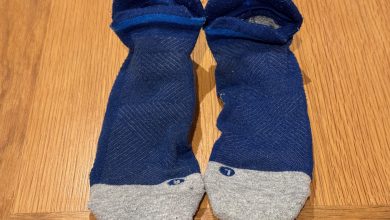Garmin Fenix 6 vs Tactix Delta
Finding it difficult to choose between the Garmin Fenix 6 and the Tactix Delta? We’ve got you.
Jake and I own the Tactix Delta and Fenix 6, respectively. We’ve trialled both watches in the wild and over numerous hikes and runs. We know what we’re talking about which means you get an unbiased view of two of Garmin’s best multisport watches available right now.
Garmin Fenix 6 vs Tactix Delta: is there a difference?
Yes! The key difference between the Tactix Delta and the Fenix 6 is the market. Garmin’s Fenix range of multisport watches is aimed at everyday people like you: from athletes intent on smashing records to novices who want to track their health stats whilst exercising.
The Tactix Delta is made for military personnel, in particular airborne and Special Forces.
What are the key software differences?
The software driving both watches is identical as is the widget layout. A bonus for anyone upgrading to a Delta as it means there’s a near-flat learning curve.
But the Tactix Delta has a few tricks up its sleeve, all of which give it a definite military angle.
There are many questions in the ‘fenix tactix delta’ debate, so here’s a rundown of the extras that come built into the Delta.
Garmin Jumpmaster Mode

Jake and I were very interested in the Garmin jumpmaster mode. For anyone who doesn’t know, a jumpmaster is a military term for the guy who pushes parachutists out of planes.
I’m not joking – part of the jumpmaster’s role is to ensure you exit the aircraft. And, no matter how you feel about it, you will leave the aeroplane when you’re told to!
This mode is designed for very specific types of parachuting: HAHO, HALO and Static modes.
HAHO, or High Altitude High Opening, is a parachuting technique where the parachutist jumps from the plane at high altitude and pulls his ripcord almost immediately. They then travel huge distances in order to insert into a dropzone. It’s great fun, but drifting for long distances at thousands of feet in altitude gets a little chilly!
HALO, High Altitude Low Opening, is what most people call ‘freefall’. But the military version is far more dangerous – a heavy bergen, a military phrase for a backpack, call destabilise a parachutist freefall mode. Trust me, it’s scary when it happens.
Static mode is the tried and trusted, ‘kick ’em out of the door en mass’ approach used to deliver large numbers of paratroopers on target, fast.
The Jumpmaster mode on the Tactix uses waypoint projection and dual-position GPS to calculate a parachutist’s exit points from an aircraft and helps them to navigate onto a target once in the air.
Night Vision Mode
The night vision mode has been designed for use with night vision goggles and is obviously made for military personnel (and maybe paintballers).
Stealth Mode
aka ‘sneaky, war-fighting by night’ mode. When activated, the stealth mode disables GPS and all wireless functions. Pretty useful if you want to prevent the bad guys from being able to track you down by DFing (Direction Find – a military term that means to detect enemy radio emanations, triangulate the position and then drop artillery on target) your position.
What are the key hardware differences?
As part of the design process, Garmin has engineered the Delta for life on military operations. I love my Fenix 6, but some of the features listed below would be ideal additions to my watch.
Kill switch
No, this doesn’t cause to fire lasers out of the bezel and destroy a grid square around you. It’s simply a reset button. Most other Garmin watches have this feature and it’s no big deal. Personally, I feel this is Garmin’s way of enticing service personnel into buying a badass watch!
Delta buttons
Definitely a bit more rugged and flatter than those found on the Fenix 6. I really like this feature and hope Garmin add it to the next version of the Fenix. The buttons on my watch are quite prominent and often snag of the tight cuffs of my midlayer clothing.
Bezel

Another functional and attractive difference comea in the form of the Delta’s bezel, which is quite flat. The profile, like that of the buttons, reduces snagging on clothing.
Look close at the bezel, you’ll notice numbers etched into the metal ring. These work in conjunction with the fourth hand to show times in UTC.
What about the screen size?
At 51mm, they’re identical.
Which Battery Life is bigger – the Fenix 6 or the Tactix Delta?
They’re the same as is the processing power of each watch. Remember, the same hardware drives both the Fenix 6 and Tactix Delta, it’s just the latter has a few extra functions that will appeal to military personnel (and paintballers).
Both watches will give you about 21 days of standard use, but this changes when you turn on your GPS, start listening to music or any other battery draining process.
Can You Play Music On The Tactix Delta?
Oddly, yes. I mean, it’s a bit crazy when you consider this watch was made with military personnel in mind.
I can imagine the egineers tapping their toes to ‘Ride of the Valkyries‘ (that YouTube clip isn’t for the faint-hearted) as they worked on the designs for this watch. And maybe you will too as your heli swoops in low to drop you into a hot DZ (I’ve always wanted to say that in a blog post).
The really big difference between these multisport watches is…
The price. Garmin’s Tactix Delta will set you back a hefty $900 (about £650) whereas the base model of the Fenix 6 costs about $630 (£529).
If you serving in the military and can justify paying extra the Delta needs to go on your shopping list. Airborne troops, in particular Special Forces, will appreciate the jumpmaster function. Nobody else will.
Need a really deep dive into both of these watches? Checkout our reviews:
Enjoy.




